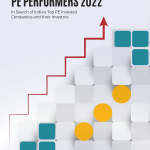
If you’ve ever been sick, you know there’s nothing like being hooked up to many devices and having a stranger in scrubs poke and prod you! You may not feel at ease, but know that the hospital staff is monitoring their compliance with all the rules and regulations to ensure you receive the finest treatment possible.
This is where preventive compliance monitoring comes in! It’s essential to ensure that clinics and hospitals give their patients the best treatment possible! The importance of preventive compliance monitoring cannot be overstated, especially in healthcare settings where slight compliance difficulties can significantly affect patient safety and the quality of treatment provided.
But before diving deep into its technique and its benefits, we need to understand what preventive compliance monitoring exactly is! So, let’s have a look at that!
What is preventive compliance monitoring?
When it comes to a healthcare organization’s compliance initiatives, preventive compliance monitoring is a proactive strategy for identifying and addressing potential risks and weaknesses. Compliance management entails keeping an eye on the rules and regulations of a company, making sure employees understand them, and taking precautions against any potential transgressions. This preventative measure aids medical facilities in preserving patient confidentiality and maintaining regulatory compliance.
Why is preventive compliance monitoring important?
Dentists and other medical professionals are big advocates of preventive treatment because it’s far more efficient to keep teeth healthy than to spend a lot of time and money fixing problems that could have been avoided. The same may be said about medical facilities’ and labs’ attempts to ensure patients’ safety and legality.
Numerous professionals have noted that between 2005 and 2019, a total of 249.09 million patients were impacted by healthcare data breaches. The healthcare provider and the individual patient may suffer irreparable harm if their privacy is compromised. Medical facilities risk losing money, getting sued, and losing credibility if patient privacy is breached.
By proactively detecting and addressing potential vulnerabilities, hospitals and diagnostic centers can reduce their exposure to these dangers with preventive compliance monitoring
How is preventive compliance monitoring implemented?
Several critical measures must be taken to implement preventive compliance monitoring in a hospital or diagnostic facility. Let’s have a look at the most important ones!
Situating potential dangers and vulnerabilities
Locating potential weak spots in the business is the first step in preventative compliance monitoring. Steps including examining existing rules and procedures, conducting risk assessments, and soliciting feedback from employees and other interested parties may be necessary.
Formulating and enforcing rules and regulations
After identifying potential trouble spots, the following stage implements some measures to fix them. Patient privacy, HIPAA compliance, and handling confidential information may be part of this process.
Staff education and training on compliance problems
Preventative compliance monitoring relies heavily on trained and educated staff. It is possible to reduce the number of breaches by educating employees on the importance of compliance and ensuring they know what they are responsible for. For example, you may hold frequent seminars on subjects like HIPAA, patient privacy, and the proper handling of confidential information.
.
Constantly checking and re-checking compliance efforts
To ensure the effectiveness of preventive compliance monitoring, it is crucial to assess the company’s compliance efforts’ status frequently. The process may include audits, assessments, and input from staff and stakeholders before any adjustments or enhancements are made.
Challenges in preventive compliance monitoring
Many obstacles can arise when implementing preventive compliance monitoring in healthcare settings like hospitals and diagnostic facilities. Issues that many people face include:
Limited resources
Insufficient workforce and funds make it challenging for hospitals and diagnostic centers to dedicate sufficient time and energy to compliance monitoring.
Convoluted rules
HIPAA, HITECH, and various state rules all have provisions that healthcare providers must follow. Smaller businesses without dedicated compliance staff can be complicated to comprehend and adhere to these requirements
Insufficient support from employees
It might be challenging to get everyone on board with compliance initiatives. Some employees may not see the significance of compliance or may be resistant to changes in long-standing procedures.
Best practices in preventive compliance monitoring
So, after checking the challenges, it’s time to check how to rectify them! Here are some best practices that hospitals and diagnostic centers can use to combat these issues and keep compliance monitoring efforts strong
Invest a significant amount of resources
Investments in ensuring compliance must be given adequate attention and resources. Either a separate compliance team should be hired, or existing employees should be given additional duties to ensure compliance.
Consult a professional for help.
Hospitals and diagnostic centers can benefit from consulting compliance specialists to better understand and comply with the many rules that affect them. One option is to hire a compliance officer or speak with outside compliance specialists
Encourage a habit of conformity
Fostering a culture of compliance inside the firm is essential to ensure that all employees value compliance and are willing to adhere to policies and procedures. To achieve this goal, management might routinely remind employees how critical it is to follow the rules.
Make compliance easier by automating processes with technology
Hospitals and diagnostic centers can better monitor compliance and assess the effectiveness of their monitoring activities by utilizing technology. For example, electronic health records could be used to monitor compliance progress.
Examples of Successful Preventive Compliance Monitoring Programs in Hospitals and Diagnostic Centers
Healthcare businesses rely on preventative compliance monitoring to guarantee they follow the rules and give their patients the best possible treatment. In hospitals and clinics, these five preventive compliance monitoring programs have been particularly effective
Anti-infection monitoring
Infectious disease prevention and control programs are excellent examples of preventive compliance monitoring in healthcare settings. To achieve this goal, it may be necessary to provide regular training for personnel, review and update infection control measures often, and conduct audits to ensure protocols are followed
Medication Administration monitoring
Medication management is integral to preventative compliance monitoring in healthcare facilities and diagnostic clinics. Training programs for staff on safe medication practices and periodic audits of drug orders and administration may be part of this process. Healthcare facilities can better protect their patients from harmful drug reactions by adhering to best practices in medication administration.
Continuous Patient Safety Monitoring
Preventive compliance monitoring can aid in identifying hazards and taking action to mitigate them, which is crucial in healthcare settings like hospitals and diagnostic centers where patient safety is of paramount importance. Hospitals and diagnostic centers can drastically lower the occurrence of adverse events and boost the quality of care overall by being vigilant in detecting and mitigating potential patient safety hazards.
These 3 instances highlight the value of preventive compliance monitoring in healthcare settings and how it may be used to guarantee that patients receive the best possible treatment.
Parting Words
In conclusion, healthcare organizations’ preventive compliance monitoring is critical to their attempts to safeguard patient information and preserve credibility. Despite the difficulties that may arise, hospitals and diagnostic centers should keep up their successful compliance monitoring efforts by following best practices.
So, next time you find yourself in a hospital bed, you can rest certain that the staff is doing everything in their power to ensure your safety and not simply because they fear repercussions from law enforcement!


